Stormproofing your garden in autumn is a smart choice as there’s a lot of potential for the weather to cause havoc at this time of year. The combination of high winds and torrential rain is never a good thing, especially if you haven’t got round to doing a thorough maintenance check in your garden at the end of summer.
If trees are buffeted by wind and their roots are growing in waterlogged soil due to increased rainfall this creates exactly the right conditions for a tree to uproot, especially if it’s top heavy. This can cause a lot of damage, and poses a structural risk to your property and garden buildings, as well as potentially ruining your garden by obliterating plants.
Another big risk with high winds is to fence panels, particularly if you haven’t maintained your fence with regular checks and repair work. The wind can get behind whole sections and lift them, either causing them to collapse or carrying them away. Including some simple maintenance tasks in your list of September gardening jobs is the best way to try and stormproof your garden before winter.
1. Check trees before stormy weather
“High winds and heavy rain can wreak havoc on gardens if precautions aren’t taken, felling even the strongest and most mature trees,” says arboriculturalist Dean Meadows at Arbtech. “Millions of the UK’s trees are lost to storms each year, but prevention is the most effective way to reduce risks.”
A few small actions that help you stormproof your home could mean you don’t end up paying out for expensive repairs. “When storms hit, trees can cause significant damage to gardens and nearby properties, so it’s important to check for obvious tree risk features,” explains Dean. “High winds and rain can cause trees to break, splinter or uproot.”
Trees often come down during UK storms and these plants can cause extensive damage to your home, which is a concern if you have large trees in the garden.
Make sure you check garden trees for any obvious risk features such as weak branches if stormy weather is forecast. If you have planted any new trees in the last few months, they may be particularly susceptible to strong winds as they will not have anchored properly in the ground yet. You can secure them with stakes to give them a better chance of staying put through strong winds.

Dean Meadows is a Principal Arboriculturist and Tree Risk Management Lead at Arbtech, with over 10 years’ experience in arboriculture and tree risk management. He is an associate member of the Institute of Chartered Foresters.
2. Anchor newly planted shrubs and potted plants
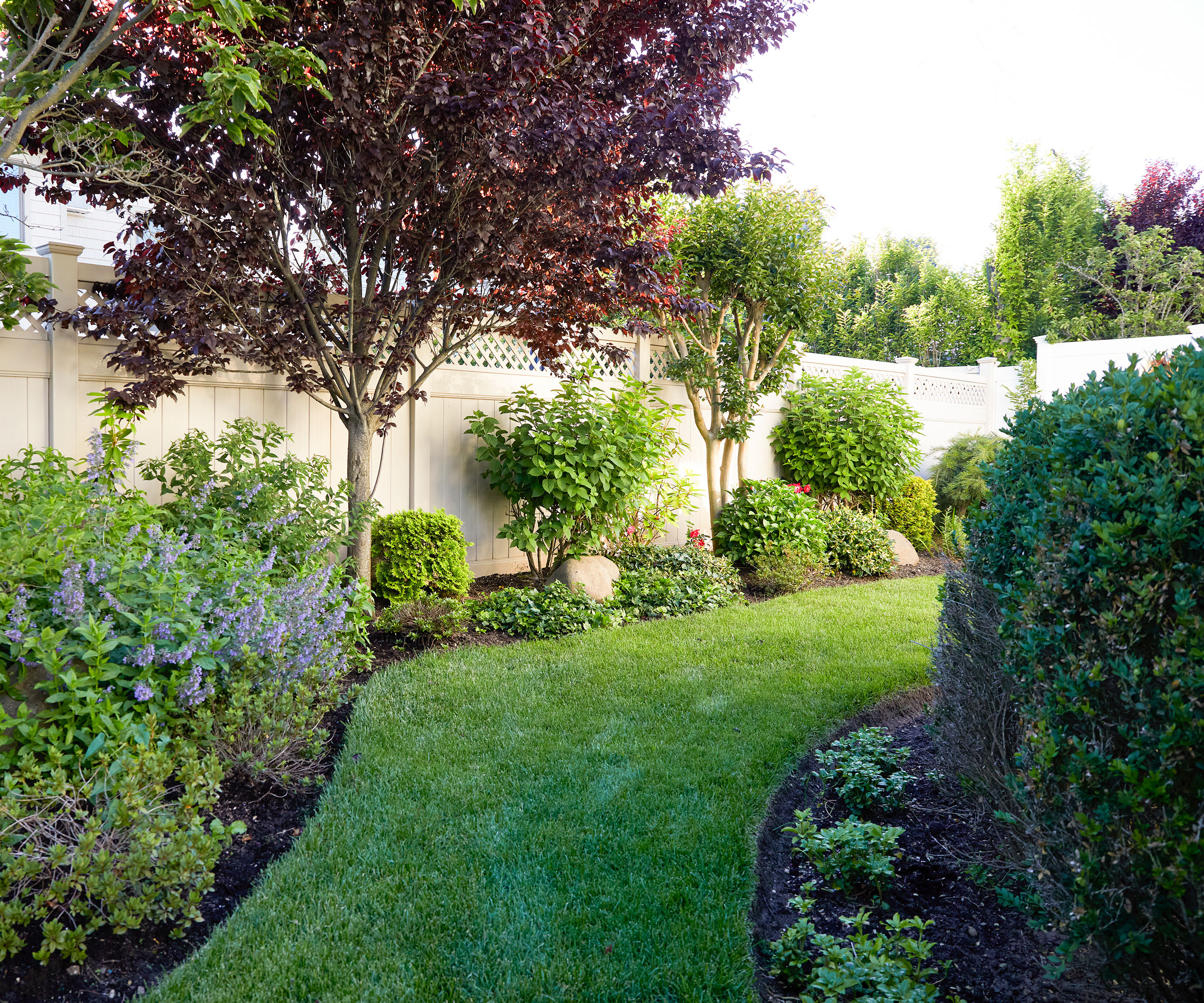
When thinking about how to stormproof your garden one of the first considerations is how best to protect plants. The last thing you want is to find your precious plants uprooted or even blown away down the street.
“If you have planted any new shrubs in the last few months, they may be particularly susceptible to strong winds as they will not have rooted properly in the ground yet,” says Dean Meadows. “You can secure them with garden canes or stakes to give them a better chance of staying put through strong winds.”
It’s a good idea to take precautions with potted plants too. Bring them indoors ahead of any turbulent weather to minimise the risk of the garden planters falling over and breaking, as well as damaging your flowers. Protect any delicate blooms in your flower beds with temporary covers to shield them from strong winds and rain.
Use tarpaulins, secured with pegs or heavy stones, to cover raised garden beds. A layer of mulch will add a protective layer for new plants that might be in danger of being uprooted.
3. Be prepared for wet weather
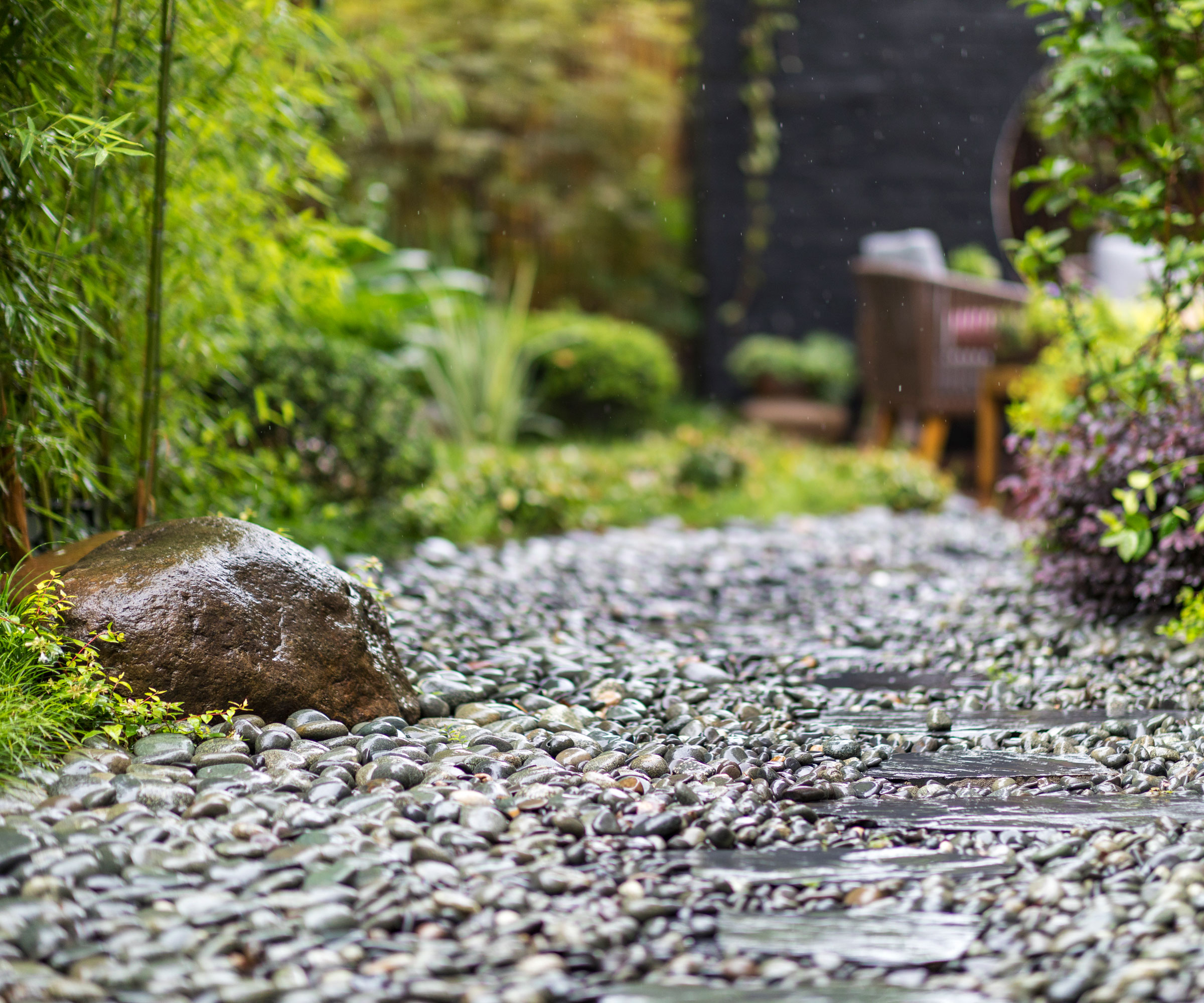
“Floodproofing your garden is crucial for its longevity and can reduce maintenance costs in the future,” says gardening expert Chris Bonnett from Gardeningexpress.co.uk. “From strategically creating space for water to flow and gather to ensuring your garden has good quality, healthy soil, taking the time to get your garden ready for wet weather will ensure its health and appearance all year round.”
There are plenty of ideas for where to put drainage in your garden to protect it from flooding. Rain gardens, for example, are shallow areas filled with plants and gravel that are designed to allow water to be absorbed into the ground.
You might also choose to implement hard landscaping ideas to control water flow in your garden. “Options for hard landscaping that can prevent risk of flooding include the use of permeable materials like gravel and concrete, which allow water to pass through,” explains Chris.
He also suggests trying elevated planting in raised beds to help keep plants above ground level, as well as improving soil drainage and preventing waterlogging. “Ensuring your garden has good quality, healthy soil not only helps your plants but allows for more water absorption.
“Good soil will filter and store water, preventing water run-off and pooling. Adding bark on top of soil retains excess water, allowing it to slowly permeate into the soil more evenly.” This will protect your plants from excess water, which could damage them.
You could also consider incorporating a rain chain idea or two in your landscaping. Rain chains work by slowing down speed at which rainwater travels from your roof to the ground, and they can even be used to divert water to areas such as flowerbeds.

Chris Bonnett, founder of the online garden centre GardeningExpress.co.uk, has over 20 years’ experience in horticulture. His journey in the industry began as a teenager, when he merged his love of the outdoors with the internet to make quality plants accessible across the UK and Europe.
4. Protect garden wildlife
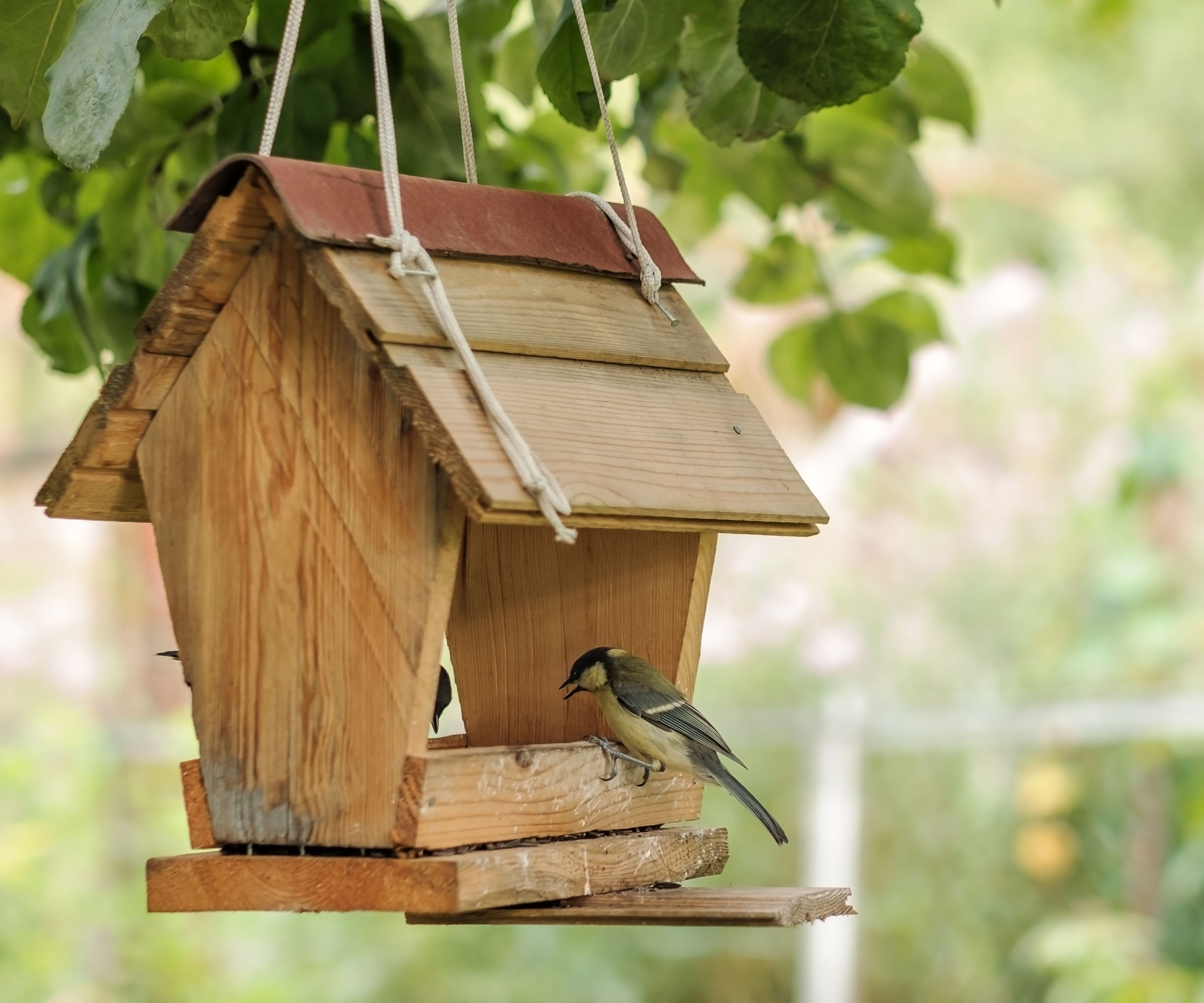
Working out how to stormproof your garden is crucial to protect wildlife from extreme weather events too. Sudden stormy weather can catch us off guard, but with a few simple steps, you can protect your garden and minimise any damage.
“Wildlife is even more vulnerable than plantlife,” explains gardening and wildlife expert James Ewens from Green Feathers. “Bird boxes, feeders and bug hotels should all be checked and firmly fixed, or moved somewhere more sheltered for the duration of the storm, such as against a south-facing garden wall.”
When providing a food source for birds, it can be difficult to prevent food from blowing up in the air when it’s windy. James suggests hanging feeders close to a wall, fence, or under a sturdy tree canopy where they will be shielded from the worst of the wind and rain. “You should also ensure you don’t let bird-feed go mouldy after heavy rainfall as this can be harmful to birds.”
Ensure bird feeders are checked and cleaned after heavy rain, and fill with a fresh supply of bird feed, such as this Extra Select premium wild bird food from Amazon.

James Ewens is a gardening expert at Green Feathers, the UK’s leading supplier of bird box and wildlife cameras, and passionate about all-things-sustainability and the environment.
5. Make sure garden buildings are secure
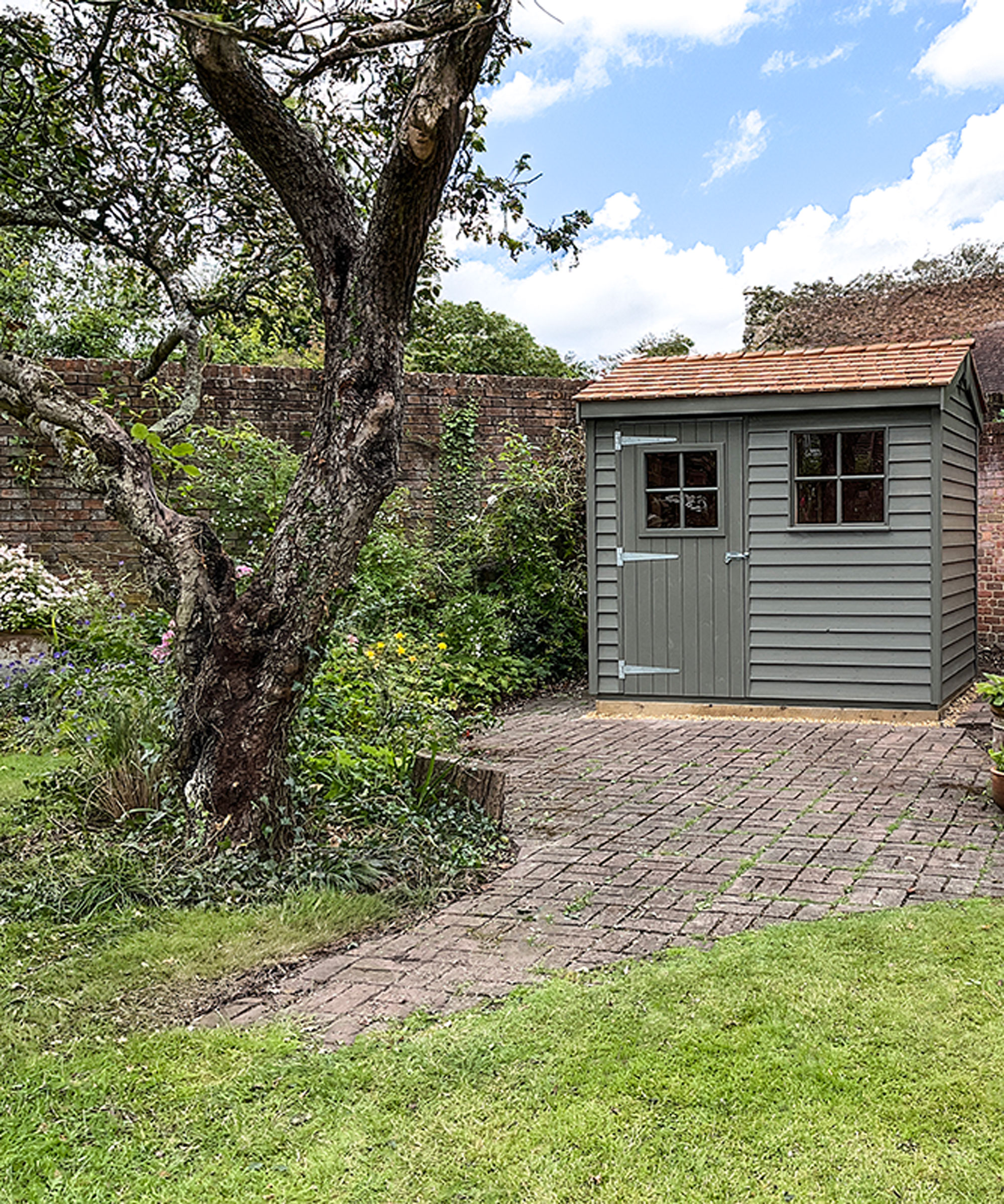
“Before winter sets in, it’s worth giving your garden buildings a thorough check,” advises Peter Mortin, a garden buildings expert at Crane Garden Buildings. “Make sure the roof of your shed or garden room is secure and free from damage, and if your building has guttering, keep it clear so rainwater can drain away easily.”
If winds are exceptionally strong, anchor any garden rooms or sheds to keep them safe. “Ground anchors are a long-term solution that you should consider if you live in an area prone to high winds,” suggest garden building expert Sam Jenkinson from Tiger Sheds. “But for a quick fix, source some breeze blocks and place them in the corners of the shed. Use as many as you feel necessary depending on its size and weight.”
Strong winds can damage glass too. It’s a good idea to check any greenhouse or shed windows for any small cracks, as these can often shatter under strong gusts of wind. Think about resealing or adding draught excluders or sealant around windows too as this will help to keep out moisture so they stay watertight.
If you have added trellises to shed panels or garden buildings to support climbing fence plants make sure they’re secure too and if not they will benefit from reinforcement. “If you have climbers trained against a garden building, give them extra support, as they can act like sails in high winds,” says Peter. “Taking these simple precautions now will help your garden stand up to storms and stay safe and secure through the colder months.”

Peter Mortin is a garden expert at Crane Garden Buildings, where he shares practical tips and inspiration to help people make the most of their gardens all year round. With a passion for connecting planting with outdoor spaces, Peter also advises on how garden buildings, from potting sheds to greenhouses, can support a thriving garden and enhance time spent outdoors.

Sam Jenkinson has been at Tiger for over four years and has built up a vast knowledge and experience in all areas of the product. He is a keen gardener and self-proclaimed ‘shed head’.
6. Strengthen flimsy fences
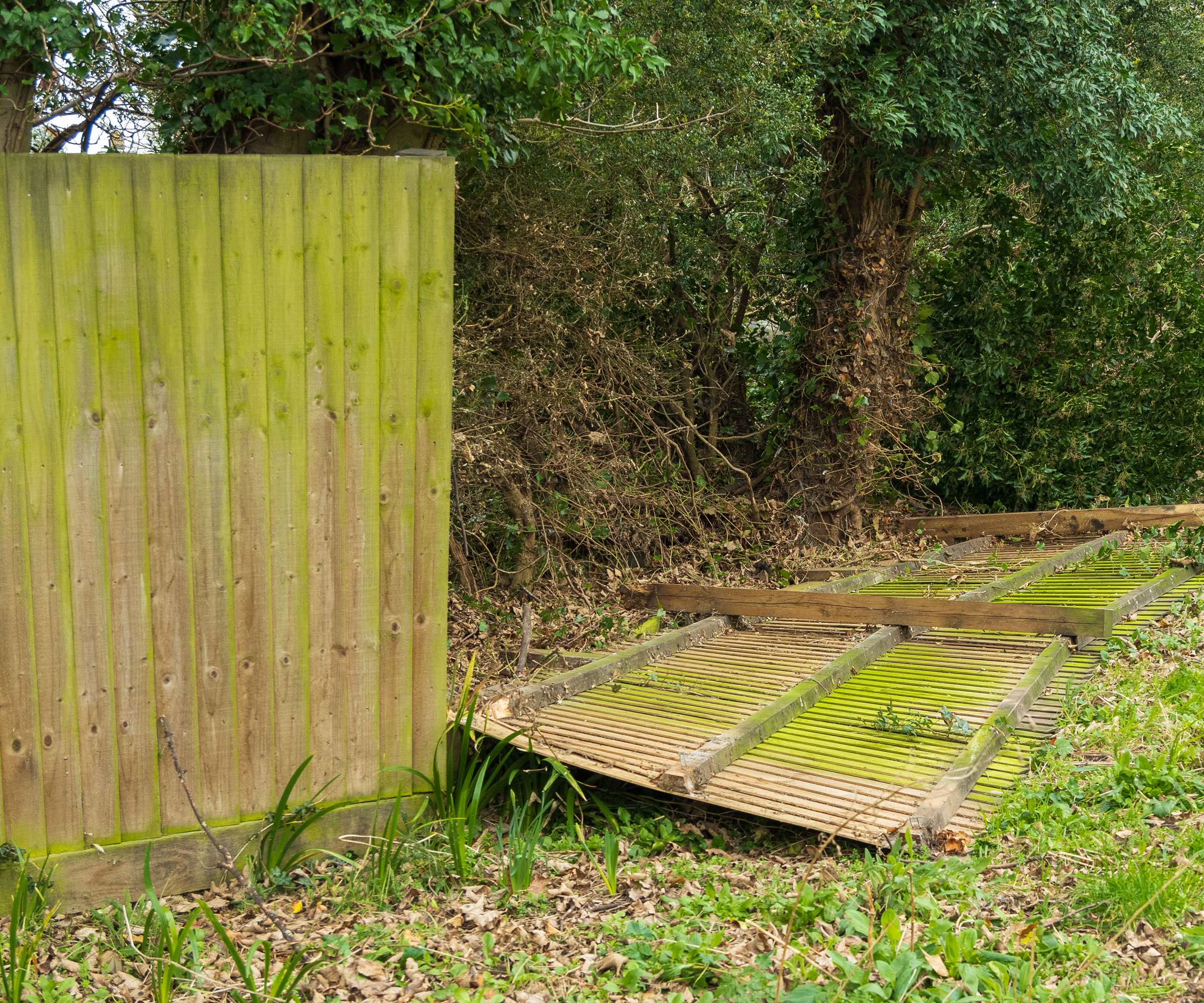
One of the most common casualties of storms are fence panels coming adrift and sagging, or swaying back and forth, as it’s only a matter of time before they fall down or worse sail through the air, particularly if the panels are flimsy anyway. This means they could cause further damage to plants and other garden objects.
“If you’re working out how to stormproof your garden be sure to check fence posts and panels for any weaknesses and secure any loose ones with additional brackets or post anchors,” advises Sam Jenkinson. “If you’re replacing old fencing, consider more robust fence types like concrete posts or metal-framed panels to withstand future storms.”
Get up to speed with how to stop fence panels rattling and the best way to replace a fence panel to keep your garden boundaries in the best shape possible.
7. Store garden furniture in sheds or garages

It’s a good idea to store garden furniture under cover if possible. If your outdoor furniture can easily be moved into a shed, garage, other garden building or storage area, then it should be. Lightweight pieces of furniture are the easiest to move, especially anything that is a fold-up design or stacks easily. It’s a good idea to give the furniture a good wipe or brush down before you pack it away.
“Unless your soft furnishings are completely waterproof, then you should always move them inside as well,” says furniture expert Lee Trethewey from Sustainable Furniture. “Before you store them, clean them according to manufacturer’s instructions and make sure that they’re completely dry. If they’re not, it increases the risk of mould and mildew growth on them, as well as anything else they’re stored with.”
If you’re storing the soft furnishings in a shed, then think about placing them in durable bags, as this can prevent mice and insects from eating them.

Lee Trethewey is general manager at Sustainable Furniture, a family-run, Cornwall-based furniture retailer specialising in sustainable, high-quality furnishings for both the home and garden. Working in the industry for 10+ years, Lee is an expert in all things interior and garden design, and he is well-versed in eco-friendly practices and sustainable sourcing.
8. Or invest in decent furniture covers
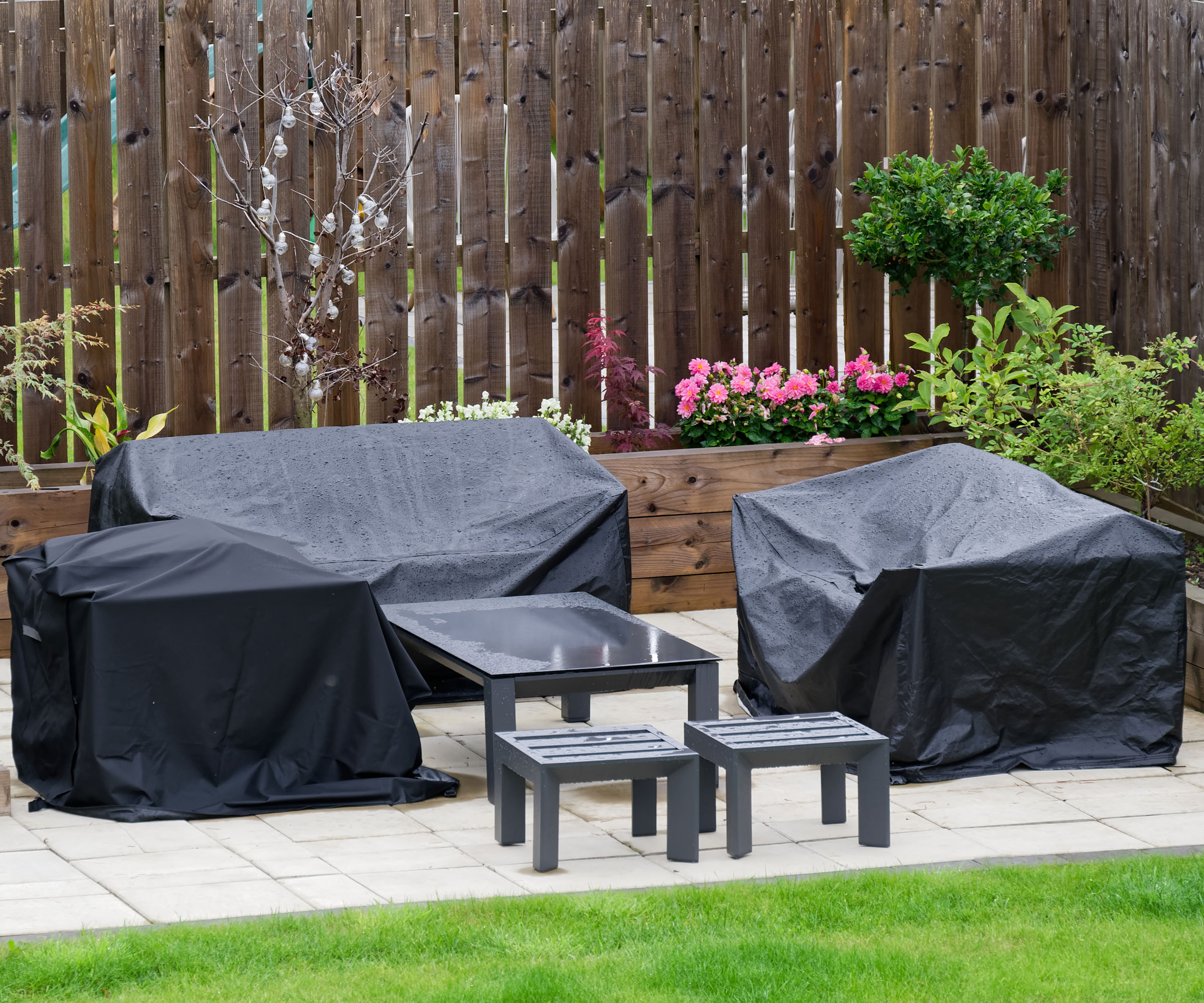
Alternatively, if you don’t have the capacity in your shed or garage storage to keep your furniture inside or under cover, or it’s simply too heavy to move, you’ll need to know how to stormproof your garden furniture by protecting it in situ.
“Choose waterproof garden furniture covers that are specifically designed to protect outdoor furniture,” says Lee Trethewey. “Cheap plastic tarpaulin covers won’t do, as they’ll trap condensation underneath, which can lead to mildew on wooden furniture and rust on metal furniture.”
Look for a cover that is made with heavy duty polyester with a waterproof lining, suggests Lee. “It should also have air vents in some form, to prevent any excess moisture from building up underneath the cover, which would make the furniture damp and therefore lead to mould and mildew growth.”
These Richie garden furniture covers from Amazon are available in a range of sizes to suit different styles of furniture.
If your covers are too loose, it won’t matter how good quality they are. They won’t be providing enough protection from the wind and rain. You can always opt for covers that have buckles or drawstring hems to secure them tightly.
Lee also recommends making sure that any lightweight furniture left outside is roped with something like bungee cord, or stacked together in order to add weight and keep it tied down. This will prevent it from flying away.
9. Check gutters and drains
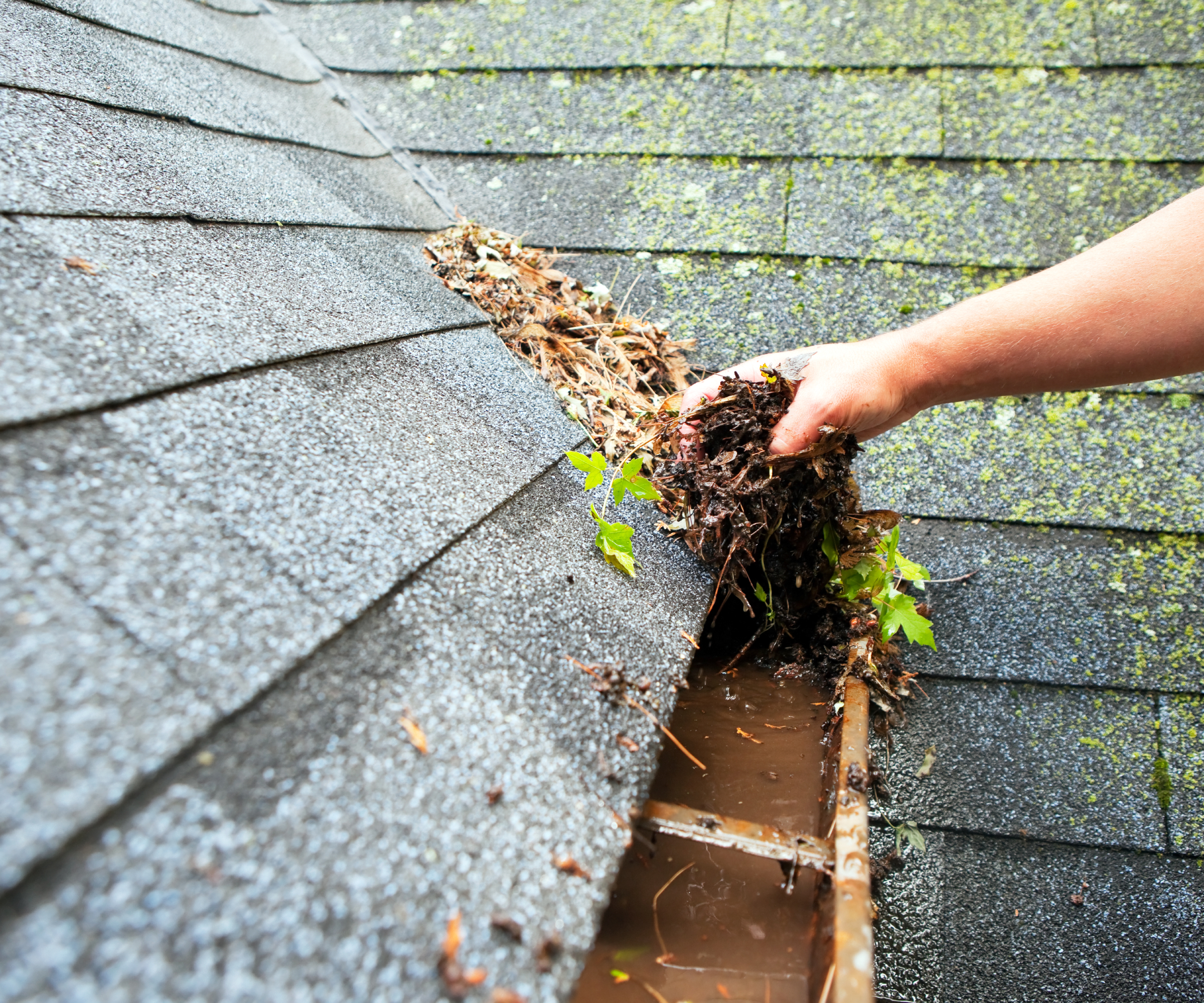
Clearing gutters and blocked drains is an essential part of how to stormproof your garden if you’re anticipating bad weather. Blocked or leaking gutters and drains can lead to flooding, especially in heavy rain.
“Heavy rainfall can cause flooding if your drainage is blocked,” explains James Ewens. “Clearing out moss, foliage, leaves and debris from gutters and garden drains is vital to ensure sufficient drainage. Not only will this prevent your plants and lawns from becoming waterlogged, but it also reduces the risks of flooding into your home, too.”
Find out how to get patio drainage right if yours regularly floods, and how to fix waterlogged soil if this is an issue too.
10. Carry out these last-minute checks
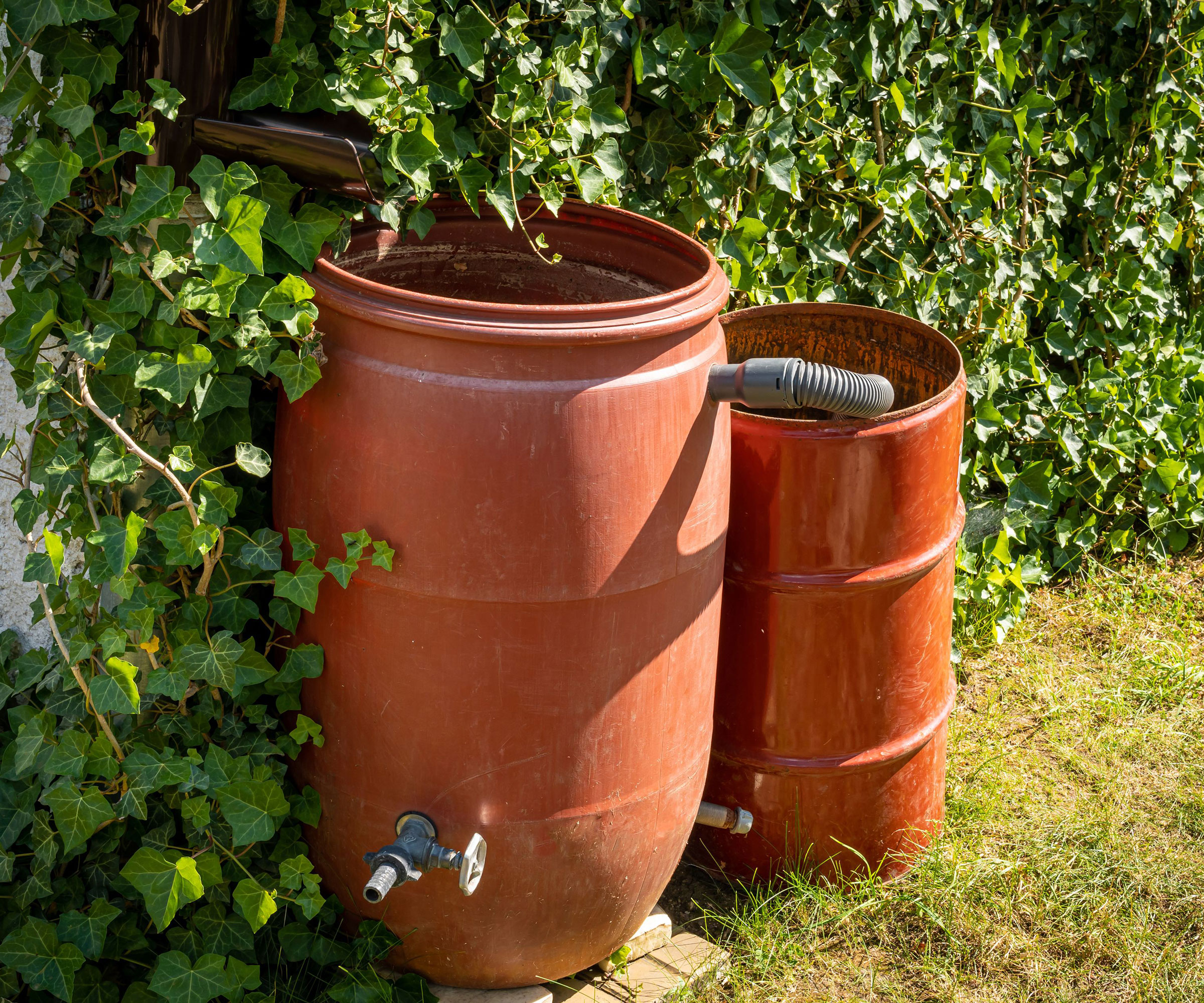
When a storm is on the way, there are some other quick jobs that can help secure your garden. It’s a good idea to do a general sweep to check for potential problems that might not be immediately obvious.
Check the level in your water butt to make sure it’s not already full to overflowing. You could use a water butt overflow kit like this one from Amazon to prevent any excess flooding out. It’s a good idea to check the downpipe is secure too.
Outdoor landscaping lighting, particularly solar or wired fixtures, and any other electricals should be inspected for loose fittings. “Remove or secure anything that might dangle or swing in high winds,” says Sam Jenkinson. “For wired installations, ensure connections are waterproof to prevent short circuits.”
Check walls and fences for smaller items such as lanterns, hanging baskets and other decorative pieces, and take them down, removing them to a safe spot indoors or under cover.
These steps will further help minimise damage and keep your garden safe during severe weather.
One final tip? Don’t forget to check shed roofs before winter sets in. The roof felt needs to be in good condition to prevent water getting in. If it needs repairing, felting a shed roof is a relatively easy job that will save time and money in the long run.
Check the door is secure too. It’s an essential element of your shed security as winter break-ins under the cover of darkness can be commonplace.
View the original article and our Inspiration here


Leave a Reply